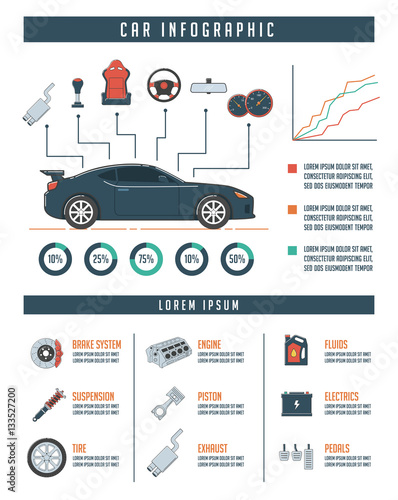Comprehending The Meaning Behind Your Vehicle'S Warning Lighting: A Comprehensive Look
Comprehending The Meaning Behind Your Vehicle'S Warning Lighting: A Comprehensive Look
Blog Article
Short Article By-Higgins Stark
When you're behind the wheel, those beautiful warning lights on your control panel can be a little bit bewildering. Do you recognize what they're trying to inform you concerning your automobile's wellness? Recognizing the value of these lights is crucial for your security and the long life of your automobile. So, the following time among those lights pops up, wouldn't you wish to decode its message accurately and take the required steps to address it?
Common Warning Lighting and Interpretations
Identify typical warning lights in your cars and truck and recognize their meanings to ensure secure driving.
The most normal warning lights include the check engine light, which signals problems with the engine or emissions system. If this light comes on, it's essential to have your lorry checked without delay.
The oil pressure advising light suggests reduced oil stress, calling for instant attention to stop engine damages.
A blinking battery light might recommend a faulty billing system, possibly leaving you stranded if not addressed.
The tire pressure tracking system (TPMS) light signals you to reduced tire pressure, affecting automobile stability and fuel performance. Overlooking this might result in dangerous driving problems.
The abdominal muscle light suggests a problem with the anti-lock stopping system, jeopardizing your capability to stop rapidly in emergency situations.
Finally, the coolant temperature alerting light warns of engine getting too hot, which can lead to severe damage if not settled quickly.
Recognizing these typical warning lights will certainly aid you attend to concerns immediately and maintain safe driving conditions.
Relevance of Prompt Focus
Understanding the usual caution lights in your automobile is only the first step; the relevance of immediately dealing with these warnings can't be emphasized sufficient to guarantee your safety on the road.
When a caution light brightens on your dashboard, it's your cars and truck's method of communicating a possible issue that requires interest. Disregarding these warnings can cause much more extreme problems down the road, jeopardizing your safety and potentially costing you much more out of commission.
https://marketrealist.com/insurance/why-is-my-car-insurance-going-up/ to alerting lights can avoid failures and crashes. For instance, a blinking check engine light could show a misfire that, if left ignored, might cause damages to the catalytic converter. Addressing this promptly can conserve you from a pricey repair work.
In a similar way, a brake system advising light might indicate reduced brake liquid or worn brake pads, crucial elements for your safety when driving.
Do It Yourself Troubleshooting Tips
If you notice a warning light on your dashboard, there are a few do it yourself fixing ideas you can attempt before looking for professional help.
The first step is to consult your car's manual to comprehend what the certain warning light suggests. Occasionally the issue can be as simple as a loosened gas cap activating the check engine light. Tightening up the gas cap might settle the problem.
One more typical problem is a low battery, which can activate various alerting lights. Inspecting the battery connections for rust and ensuring they're protected could fix the trouble.
If a warning light persists, you can try resetting it by disconnecting the automobile's battery for a few minutes and then reconnecting it. In addition, examining your vehicle's liquid levels, such as oil, coolant, and brake fluid, can aid troubleshoot cautioning lights associated with these systems.
Final thought
In conclusion, comprehending your vehicle's warning lights is necessary for keeping your car running efficiently and safely. By without delay addressing these notifies and knowing what they imply, you can stay clear of costly repair work and prospective breakdowns.
Keep in mind to consult your vehicle's manual for certain information on each cautioning light and take action as necessary to ensure a trouble-free driving experience.
Remain educated, stay active detailing when traveling!
